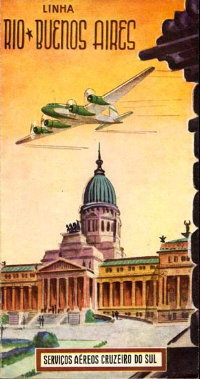
About Andrew Cusack
 Writer, web designer, etc.; born in New York; educated in Argentina, Scotland, and South Africa; now based in London.
Writer, web designer, etc.; born in New York; educated in Argentina, Scotland, and South Africa; now based in London. read more
News
Blogs
Reviews & Periodicals
Arts & Design
World
France
Mitteleuropa
Knickerbockers
Argentina
The Levant
Africa
Cape of Good Hope
Netherlands
Scandinavia
Québec
India
Muscovy
Germany
Academica
BA: “an old-fashioned European city”
“Argentina has to be one of the most underrated travel destinations,” Michael Buerk writes in his salute to Argentina in today’s Daily Telegraph. An excerpt:
 AT THE HEART OF IT ALL IS Buenos Aires, one of the world’s most exciting cities. I was there for months during the Falklands War, reporting for the BBC. They were praying for me in our local church. If only they had known how close I had come to eating myself to death – those steaks are huge – they would have prayed even harder.
AT THE HEART OF IT ALL IS Buenos Aires, one of the world’s most exciting cities. I was there for months during the Falklands War, reporting for the BBC. They were praying for me in our local church. If only they had known how close I had come to eating myself to death – those steaks are huge – they would have prayed even harder.
It is an intensely Anglophile country, and was even then. The upper crust didn’t want to argue about the sovereignty of the Falklands (any more than they would want to argue now about oil drilling); they wanted to know where in Jermyn Street to order their cavalry twills. The hundreds of thousands of descamisados (literally, “shirtless ones”) who packed the Plaza de Mayo screaming for Mrs Thatcher’s blood would break off when they saw the BBC logo on the camera to make sure they had got the lyrics to “Hard Day’s Night” exactly right. The city’s biggest department store was called Harrods, the poshest club was (and is) the Hurlingham and the most popular film during the war was “Chariots of Fire”.
The veterans of the Malvinas, portly and grey-haired now, camp out in the Plaza de Mayo, still begging for better pensions. Porteños (the locals’ name for themselves) call them “the whiners”. The memorial to the 700 or so Argentine dead is prominent enough, but it is just a list of names and the eternal flame has long since gone out. It faces the great clock, built by the British a century ago (with a movement copied from Big Ben). The locals still call it the English Tower, even though it was officially renamed after the conflict. The cause still rankles, but the war is an embarrassment.
There’s poverty in the suburbs but, at its heart, Buenos Aires is a grand city, laid out in the days when its wealth and its future seemed unlimited. The world’s widest avenues, finest opera house, most opulent fin de siècle town houses, and – my idea of heaven – Italian restaurants cooking the world’s most wonderful meat. (Try La Brigada, where they cut the tenderloin with spoons. And don’t order “Baby Beef” looking for a light meal; it weighs in at just short of a kilo.)
It’s an old-fashioned European city, with a café society oddly short of dark faces. The original natives, and the African slaves, were wiped out or pushed out. The most prominent of the country’s remaining blacks (70 or so, it is said) was arrested at the airport recently because officials thought her Argentine passport must be a forgery.
The city is full of grand monuments, mostly to the chancers who snatched independence when Spain had its back turned, bowing the knee to Napoleon. They are as extravagantly memorialised in death as they were spurned in life; nearly all of them died in exile.
Argentina’s real heroes can be seen, stuffed, in the colourful old dock area, La Boca. Life-size models stare at you from the shops and down from the balconies. There are just three of them, and a tawdry trio they are. Eva Duarte Peron, of course, the actress who slept her way to the bottom of the movie business and into the life of a crypto-fascist colonel on the make; a long-dead tango warbler called Carlos Gardel; and Maradona, the squat footballer with the hand of God and the soul corroded by cocaine. Two of them died young; the third is still trying.
Death is a big thing in Argentina. La Recoleta cemetery is worth the trip in itself. It’s an entire suburb of gloriously overblown mausolea; a gentleman’s club for the dead, even harder to get into than the Garrick. Evita is there, in the Duarte family tomb. Her father’s relatives famously said they wouldn’t be seen dead with her; now she’s banged up with them for all eternity. There’s a new museum to Evita that’s worth seeing, with a pinch of salt.
I would dispute Bs.As. being “an old-fashioned European city”. It is instead a rather vigorous American city that retains many of the best attributes of an old-fashioned European city.
Search
Instagram: @andcusack
Click here for my Instagram photos.Most Recent Posts
- Patrick in Parliament March 18, 2024
- Articles of Note: 13 March 2024 March 13, 2024
- Cambridge March 9, 2024
- Taken on Trust March 4, 2024
- Immanuel on the Green March 2, 2024
Most Recent Comments
Book Wishlist
Monthly Archives
Categories



The fascinating thing about travel writing is that it says more about the workings of the writer’s mind than it says about the subject at hand.